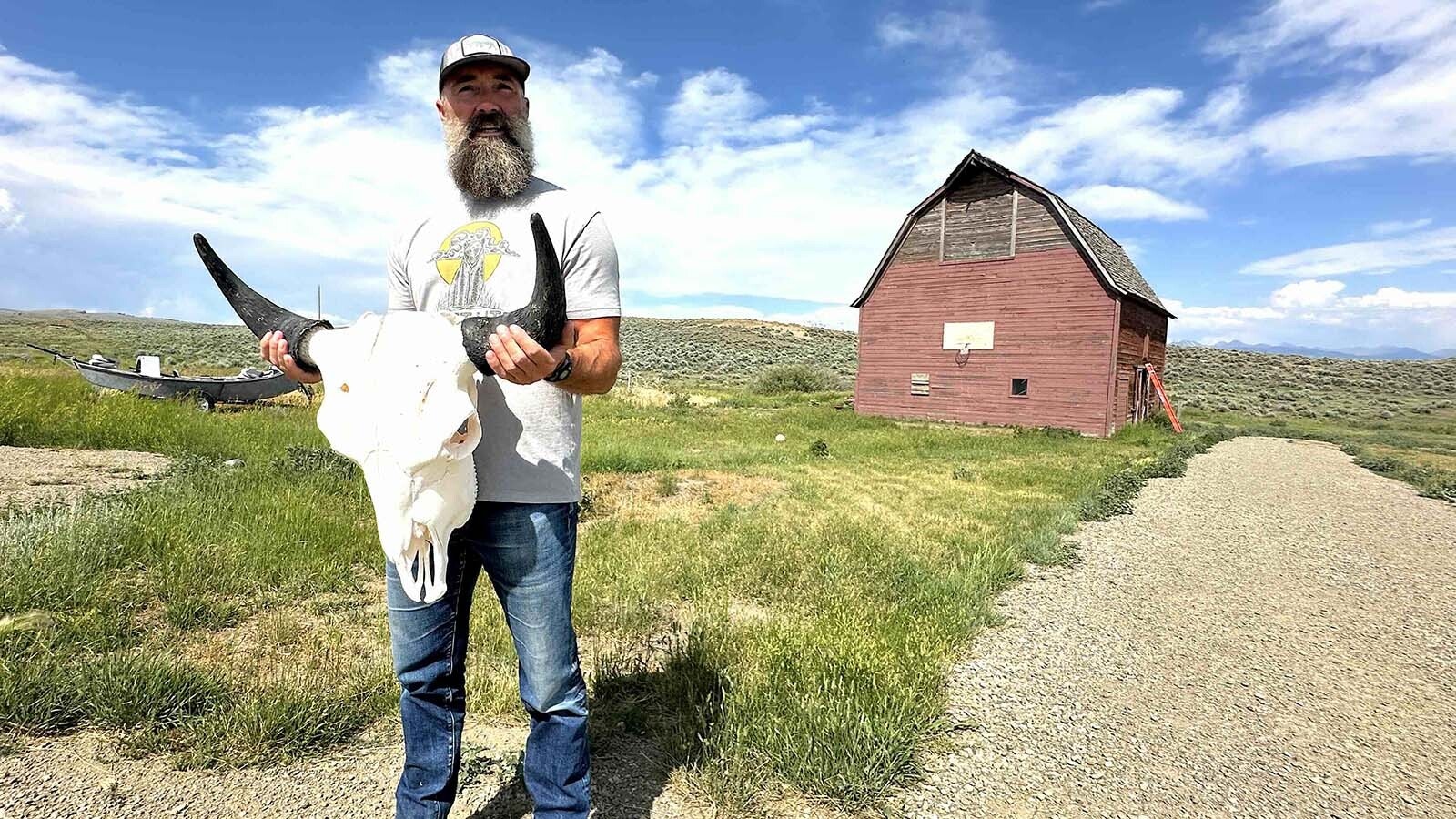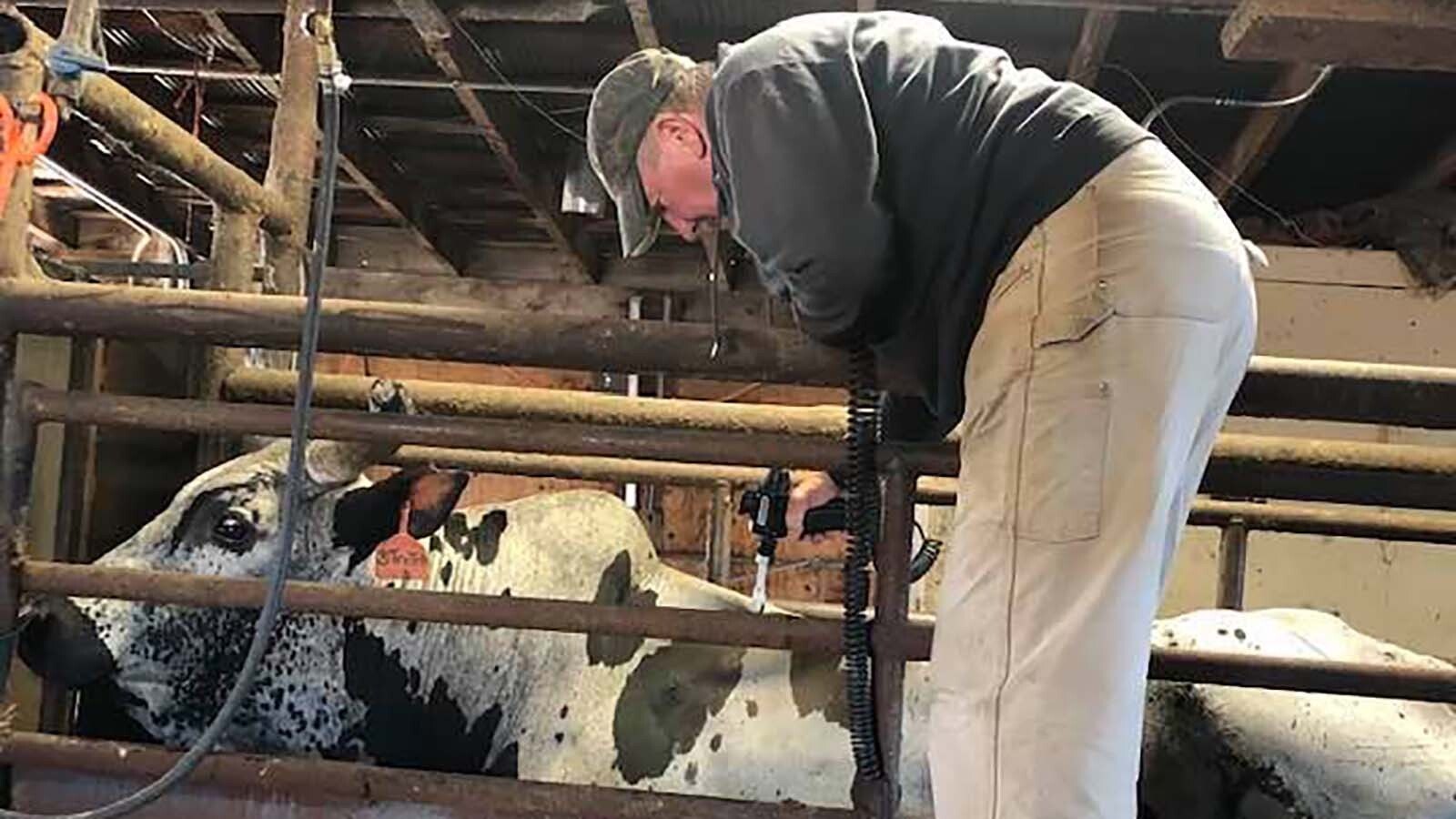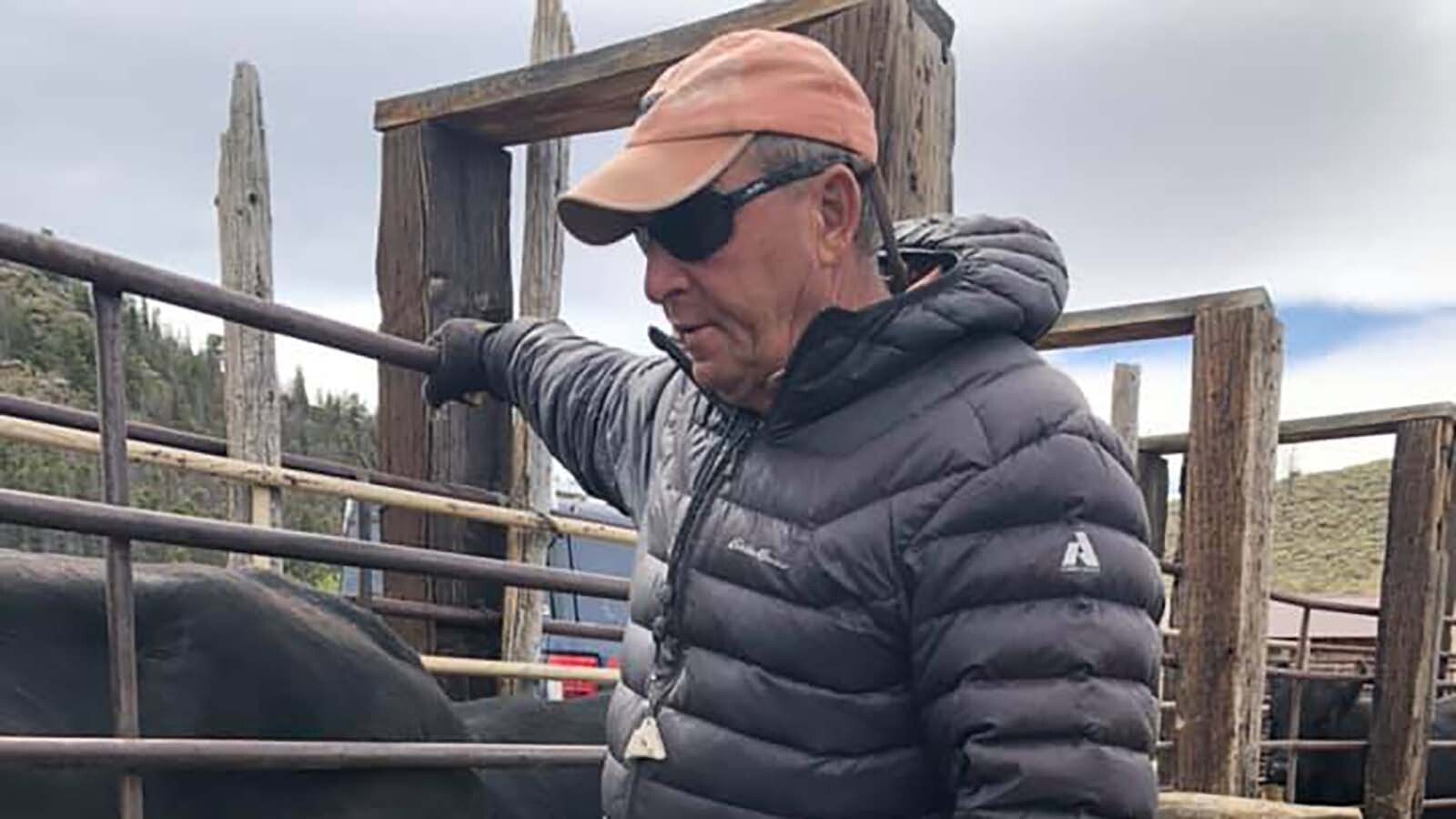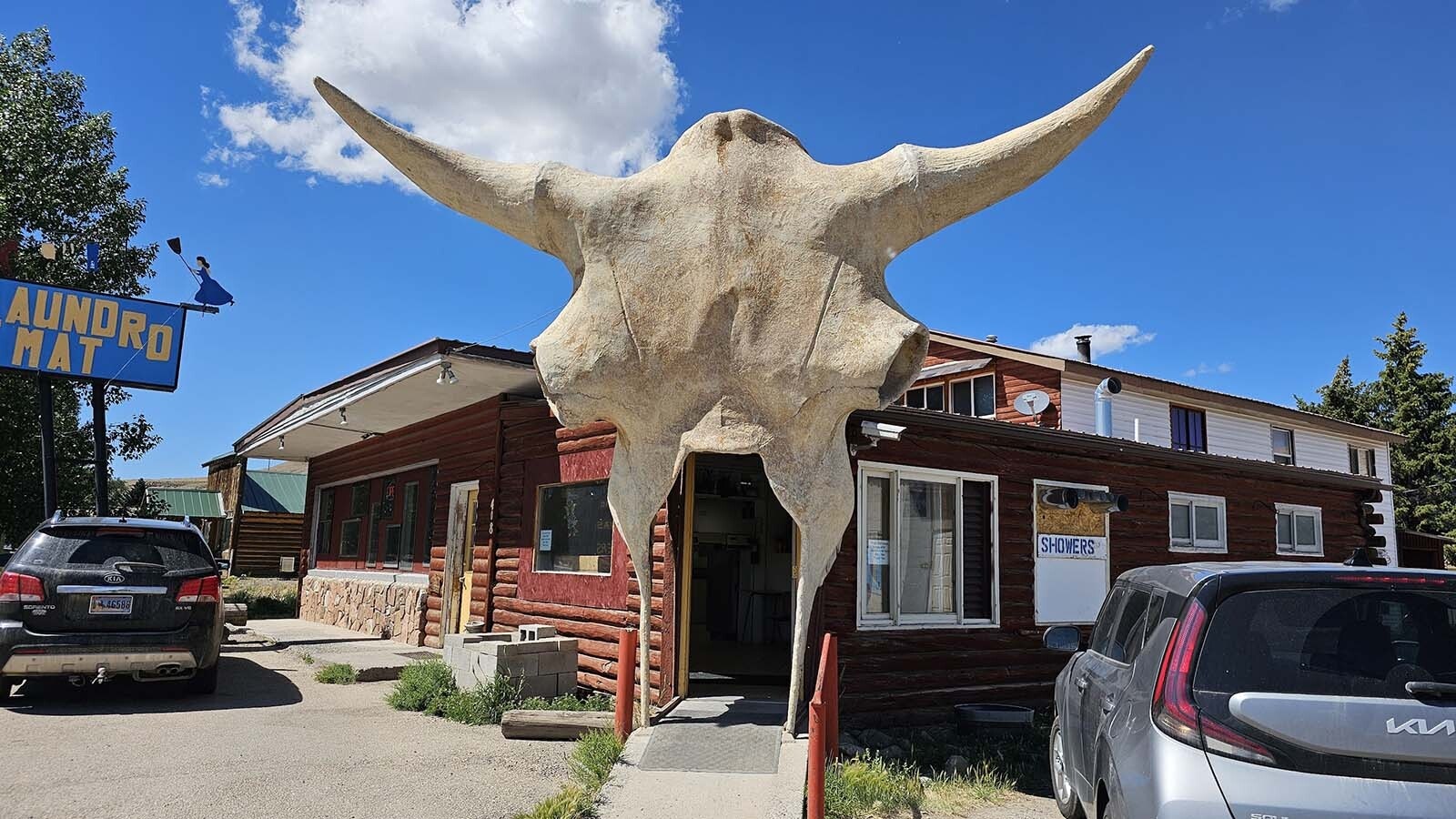Yellow means faster mail delivery. Blue means slower.
On a map showing where Wyoming lands in the U.S. Postal Service’s future plans, the entire state is blue.
Wyomingites turned out in force to voice their complaints about the idea of slower statewide mail delivery. But they didn’t get as many answers as they had questions.
Doreen Garrison, postmaster of Bairoil, Wyoming, promised her customers she would relay their concerns with the U.S. Postal Service’s proposals for Wyoming, which would move all of the Cowboy State’s large processing centers to other states and will chop $3 billion in costs by sacrificing rural mail delivery.
She was in the online-only meeting Thursday afternoon keeping her promise, in spite of feeling that it was just a “dog-and-pony show.”
“I’m not going to reiterate all the other comments that have been made because it’s silly,” she said. “I know this is a dog-and-pony show, and no matter what we say, it isn’t going to matter. But I promised my customers here at the Bairoil Post Office that I would be on this Zoom meeting.”
Garrison did take issue with one of the claims Postal Service officials made during the meeting that medications will still get to their destinations in a timely fashion.
“You’re saying medical is not going to be affected, but it already is,” she said. “I’ve had several customers who get their medication from the pharmacies in Rawlins that is 40 miles away, and that medication goes all the way to Denver. It gets circulated from Denver, and it often winds up in different places in Denver, like Aurora, before it even comes back here to Wyoming.”
Garrison also suggested Express Mail, too, will be negatively affected by the USPS proposal, before signing off.
There was no response from USPS officials to Garrison’s comments.
One of the most important questions that was answered was where people who didn’t get to participate in what the USPS billed as a public forum can send their comments.
Those comments may be sent to Alexandra Reams at alexandra.m.reams@usps.gov.
“There are other mechanisms to submit your comments through this regulatory process,” Reams added. “But this is just another way for you to offer your feedback.”
What’s In The USPS Proposal
Many questions remained unanswered during the four-hour session, but one thing that was pretty clear is that the original plan to move all of Wyoming’s large processing capabilities to other states is definitely not off the table.
A map showed the future locations of all of the large processing centers, which are called Regional Processing and Distribution Centers, in yellow. On that map, Wyoming is 100% blue, meaning no part of the state is within 50 miles of an RPDC in the proposed new postal service system.
That includes Cheyenne, the state’s capital city, as well as its second largest city, Casper.
Both of those are presently home to large processing centers. That functionality will move to Denver and Billings, but the centers won’t be closing altogether, Cowboy State Daily was told in response to its question about what being an all-blue state will mean for mail delivery in its urban and rural areas.
“Regarding the map, the map of the blue and yellow is not rural versus urban,” an unidentified postal service official said. “The map of the blue and yellow was any ZIP code within 50 miles of the approximately 60 RPDCs in yellow. Any ZIP code not within 50 miles of the approximate 60 RPDCs was in blue. It’s not a distinction between urban and rural.”
The postal service employee went on to say that the map did not show the 190 additional local processing centers, which is what both Casper and Cheyenne are slated to become under the Delivering for America proposal.
“Just because there may not be a facility on the map there does not mean that there is no processing facility in that location,” the official said.
No opportunity for additional questions was given during the forum and Cowboy State Daily’s questions about the future viability of rural mail delivery if the proposed changes cause businesses to move from blue areas to yellow, and how the new system would affect absentee ballots in future elections beyond 2024 went unanswered as well.

Wyomingites Showed Up
Although the USPS did publicize Thursday’s meeting, it didn’t widely publicize that there was a Tuesday deadline to sign up to comment and attend. It also didn’t publicize that its public meeting would not be livestreamed for people to watch, and that the only way to see the meeting was to have signed up by noon on Tuesday.
Wyoming was still well-represented throughout the forum, with several Cowboy State residents among those commenting and raising concerns.
Candy Moulton, who also is a Cowboy State Daily columnist but attended the meeting as a Wyoming resident, chastised the Postal Service for its handling of the Thursday meeting, questioning why more transparent notice wasn’t given.
“I know of more than three dozen people who tried to register for this meeting and could not,” she said.
Among those was Secretary of State Chuck Gray.
“As far as I know, the deadline was also not advertised,” she added. “I’d like you to address that.”
Moulton also asked whether there would be another meeting at a more appropriate time of day, instead of the middle of the day when people are working, and whether the plan is to just push through with removing all of the Cowboy State’s large processing units, in spite of all opposition in the state to that idea.
Her questions were not answered.
The only question of Moulton’s that was answered dealt with cut-off times for rural post offices, and whether the current proposal would mean an additional day being added to mail delivery times for rural post offices such as the one Moulton uses in Encampment, where the current cutoff time for mail pickup is 2 p.m.
“It would be very similar to if volume was entered after the 2 p.m. cutoff, that volume would not go out until the next morning,” an unidentified postal official said. “That volume would not go out until the next morning.
“So, we are suggesting the same thing. We would essentially have a 5 p.m. cutoff time, or whatever that office’s closing time is, and then that volume would be collected at the same time that the next day’s volume is being delivered to that post office. So, it would be an increment of one day, if that office is impacted by RTO (Regional Transportation Optimization).”
The RTO designation refers to the plans to consolidate more routes and pickup times in outlying areas to favor efficiency and faster mail delivery for areas within the 50-mile radius of an RPDC.
Discrimination Against Rural Areas
Ricci Roberts, branch president of the Cheyenne mail handling unit, suggested the Postal Service’s plans unconstitutionally favor urban areas at the expense of rural communities.
“Delaying the mail is a federal crime,” she said. “I understand you guys are moving the goal posts to pretend like it’s not delaying the mail, but here in Wyoming, we used to process our mail and deliver next day. Now we’re talking about a two-day delivery, best-case scenario.”
That best-case scenario doesn’t consider weather or road closures or any other problems, Ricci added.
“The other thing I’d like to bring up is that you guys are waiting for full trucks,” she said. “Wyoming does not fill trucks. We will never be profitable to fill an entire truck. So, we will be delaying all of that mail.”
An unidentified USPS employee replied that the agency is well aware of its statutory obligations.
“We are required by law to provide precise, reliable, efficient universal postal services in a financially sustainable manner,” he said. “We are not doing so right now. So, the purpose of this proposal is to allow us to actually achieve the mission that Congress has set out for us.”
The individual also said he disagrees that the proposal violates Section 403, which prohibits singling out rural areas.
A different unidentified official said the point of the proposal is to address the situation that Roberts mentioned, where Wyoming isn’t able to fill a truck.
“This would allow us the opportunity to aggregate those volumes into those originating RPDCs, so that we can build trucks that have greater utilizations,” he said. “Without that, we’ll be in the status quo we do today, forced to dispatch some trucks underutilized.”
New Plan Isn’t Good Business
Keneth Hoffman from Wyoming’s Weston County told postal officials that their plans don’t make good business sense.
“Recently, I sent a priority package, medium-sized box, from Newcastle, Wyoming, to Monterey, California,” he said. “It left here on Monday on the mail truck and arrived at Monterey on the following Saturday.”
Adding a day to delivery times would push delivery of that package into the next business week, he said.
“Add two days, and it’s the same thing, just later in the week,” he said. “So, it’s typical bureaucratic hubris to think that lowering your standards will increase your revenue. Because, on your chart, you said one of the goals is to increase revenue.”
Poorer service is going to do the opposite, Hoffman suggested.
“Like one of the other commenters said, you have to improve your performance if you really want to increase revenue,” he said. “That’s my comment. Please consider that, I know it’s a complicated thing …“
“Thank you very much sir,” the moderator cut in. “We appreciate you being here with us today.”
Ditto from Wyoming resident Melinda Bobo, who said one of the reasons Wyoming is “wound up” about the proposal is that when they hear things like reducing “unique transportation legs” they know it applies to the entire state.
“We know, when anybody does that, our service is going to degrade,” she said. “So that needs to be explicitly explained what that means.”
Wyoming also has a low population density, she pointed out, like many Western states.
“We can argue about how you’re defining rural versus urban,” she said. “But low population density is all of the Rocky Mountains, so we know that’s going to hammer us.”

About Those Medications
Postal Clerk Kelsey Worley, who works in rural Wyoming, told USPS officials that in addition to delivering many VA medications, she’s also the wife of a disabled veteran.
“The majority of the time, the Sheridan VA center sends these medications to Casper and then these medications are back up to the west side of the Bighorn Mountain within a couple of days,” she said. “I know you said that the medications would not be influenced with this new proposal, but I would like to know if DeJoy closes down the Casper Distribution Center and the Cheyenne Distribution Center, what happens when our veterans, our Wyoming veterans, can’t get their medications in time?”
She suggested the stress of not getting medications on time could lead to terrible outcomes, including some who end their lives.
“What does he plan to tell the families and loved ones of these veterans who end their life?” Worley asked.
An unidentified postal official told Worley that most facilities won’t close, but will be “renovated and uplifted” so that they are better places to work.
“They’ll have the right equipment, the right lighting, the appropriate conditions to work in,” he said.
He added there would be no career layoffs as a result of the changes to the Casper and Cheyenne locations, and that they are following all collective bargaining agreements where they apply.
An individual whose first name was given as Sharon said that the intention is to provide better service, not worse, that is more predictable.
“That especially goes for veterans and their medicine,” she said. “We have looked at where current pharmaceuticals ship from and our expectation is the number of days it will take for veterans to receive their medicine will be the same or faster. So, this is in no way aimed at harming our veterans ability to get medicine in a timely manner.”
Renée Jean can be reached at renee@cowboystatedaily.com.





